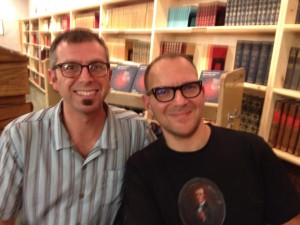This presentation by Sarah Bird was one of the highlights of #DefragCon. I really loved what she said and all the data she shared.
How to Build a B2B Software Company Without a Sales Team
Sarah Bird, CEO Moz — @SarahBird
- Moz
-
- $30M/year revenue
- growing from 2007 to current day
- Moz makers software that helps marketing professional
- Requirements for selling B2B software without a sales team
-
- A nearly frictionless funnel
-
- i hate asking for money
- we made a company company that rarely asks you for money
- People find our community through our Google and social shares.
-
- they enjoy our free content: helpful, beautiful.
- Q&A section.
- mozinars: webinars to learn about SEO, etc.
- eventually, you may sign up for a free trial. 85% of sign up for a free trial.
- customers visit us 8 times before signing up for a free trial.
- moz subscription: $99/month is most popular (and cheapest) plan
- Large, Passionate Community
-
- We had a community for 10 years.,
- We were a community first. Started as a blog about SEO
- Content is co-created and curated by the community.
- Practice what we preach.
- 800k marketers joined moz community.
- Come for the content, stay for the software.
- No sales people, but really good community manager.
-
- their jobs is to foster inclusive and generous environment to learn about marketing.
- Big Market
-
- if you’re going after a small market, just hire someone to go talk to those people.
- Low CAC & COGs business model
-
- Cost of Customer Acquisition
- Avg customer lifetime value: $980
- average customer lifetime: 9 months
- fully-loaded CAC: $137
- approximate cost of providing service: $21/month
- payback period: month 2
- Customer Lifetime Value is on the low-end
-
- moz: $980
- constant contact: $1500
- but we have the highest CLTV/cost ratio
- cost
-
- moz: $137
- constant contact: $650
- Rethink Retention
-
- Churn is very high in the first 3 months: 25% / 15% / 8%
- But by month 4, churn stabilizes. Now you are a qualified customers.
- Looking at first 3 months. composed of:
-
- People I’m going to lose no matter what i do. they are not target customer.
- people i should be keeping, but i’m not.
- people who i will keep even if i don’t spend effort on them. they “got it” right away.
- Don’t worry about the first group. they are not the target customr. let them go.
- second group: keeps me up at night.
- you must know how to tell these groups apart, especially with respect to their feedback. feedback of the first group should be ignored!
- Heart-Centered, Authentic, Customer Success
-
- Need awesome customer support team. we don’t have salespeople up front. Instead, we treat them really well once they are paying us.
- We don’t try to use robots to save money.
- We talk to the customers, visit their websites, suggest improvements.
- We don’t have a storefront or physical presence. so how do we make the relationships longer, stronger? we sent out happy packets of moz fun stuff.
- Benefits
-
- Your community is a flywheel.
-
- it takes time to get up to speed.
- once the flywheel starts spinning, the community starts to create itself.
- now moz is just the stewards of the community.
- it’s like hosting a really great house-party of respectful guests.
- it’s an incredible barrier to entry for competitors.
-
- there’s no shortcut, no way to buy into this.
- Low Burn rate helps when the economy goes in the shitter.
-
- no sales team means less burn.
- less capital required.
- easier to self-funded.
- no community to calculate.
- the strategy generates lots of predictable recurring revenue: 96% of revenue is recurring.
- risk is distributed across a broad customer base. even if the best customer leaves, it’s no big deal.
- we can pour more dollars into R&D
-
- third group: don’t worry about them either.
- Caveats
-
- No magic growth lever: can’t just scale from 5 salespeople to 10 salespeople.
- Will public markets and VCs continue to prize growth rate over burn rate?
- Future of B2B Sales
-
- Every business is a publisher.
- Every business has a community.
- Are you managing it?
- Increased transparency around quality and pricing.
-
- should lead to more corporate accountability.
- Multi-channel, customer driven contact
- customers want shorter contract cycles. Nobody wants to be locked into anything anymore.
- Software sales begin with the people who use the software. They advocate to the C-suite.







